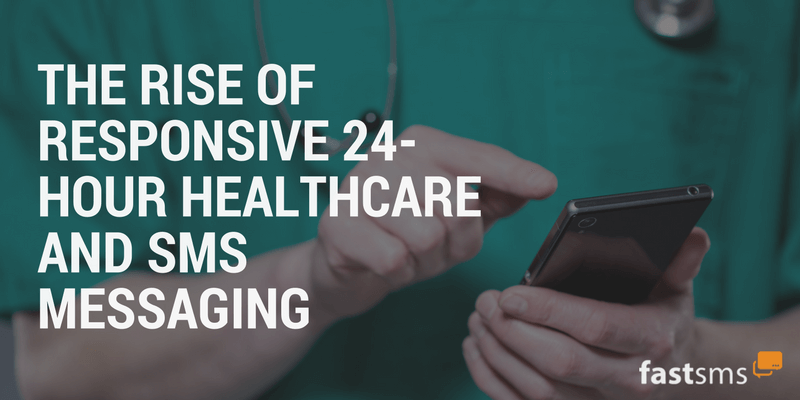5 Ways to Personalise Your Next SMS Marketing Campaign

Many businesses use SMS marketing in their outreach strategy thanks to how powerful it is as a way of quickly and easily communicating with a large number of individuals. It was reported in 2013 by Forbes that, at the time, more people have mobile phones than toilets. Additionally, research has shown that text messages have an open rate of around 95%, compared with e-mails at 20%. On top of this, it has been found that 44% of consumers actually prefer to receive marketing messages through business text messaging, over any other kind of communication.
However, there are always ways in which this type of marketing can be optimised further. One such way is through personalisation. This may seem like an insurmountable challenge when you are trying to communicate with so many people at the same time. The last thing you want to do is have to send out one message at a time to thousands of numbers. Yet this isn’t necessary – in fact, it is more than possible to add several layers of personalisation to your SMS marketing. It can go a long way towards building up customer loyalty and their desire to buy from you or use your services over another competitor.
Emojis
Reports are showing – perhaps unsurprisingly – that the use of emojis is rapidly increasing across a variety of marketing channels. With the types of graphics available for use constantly expanding, there is an ever-growing repertoire of ways in which they can be used. Not all brands are using the same emojis, so there’s plenty of room to craft out your own identity with these. For example, when people talk with each other in a standard conversation, face emojis are the most popular as they help emphasise self-expression and emotions.
Emoji messages are not picture messages or MMS. They’re about adding a small graphic into the body of an SMS message in order to add further dimension and clarification to what is being said. They can help you enforce a point, or communicate much quicker and easier with your audience. They help to simplify messaging and ensure that the meaning of the communication isn’t lost. This can have a huge impact on ensuring you get the response you’re looking for with your SMS campaign. They also help in catching an audience’s attention, especially as they start to receive more messages from various brands.
It has been found that the use of emojis within marketing messages has increased by 20% each month, on average, during 2017. If you’re not already doing this, it’s time to catch up with the rest of your competitors. Some of the best ways to integrate this in your SMS messaging is to match up the emoji to your business. For example, if you sell pizza, make pizza your emoji. If you are a greengrocer, use the new array of vegetable emojis. If you are a holiday company, use the aeroplane emoji. However, it’s also important to know your audience. Younger people will understand and appreciate the value of emojis more so than an older generation will.
Adding the customer’s name
When sending out online SMS messages, another way of personalising your campaign is through adding the contact’s choice of name within the contact list for your SMS marketing campaign. This is one benefit of sending out via online software, rather than direct from a mobile phone. When using an online application to send out your messages, you can (very cleverly) add the customer’s name automatically into the body of the text message using merge tags. This just requires an extra amount of organisation, ensuring you have their names accurately listed in a spreadsheet with their numbers prior to mailing out to them.
The message sent out will then be different for each user, so it will feel as though you are communicating with them directly on a one-to-one level. This is also something that can be done with e-mail, although it isn’t seen as often in business text messaging.
Adding someone’s name always helps to make a campaign stand out, and can quickly grab their attention. It will also feel as though you are speaking with them directly. It is always worth running a few tests before you send anything, however, as it has the potential to go wrong – and this could look much worse than not doing it at all. The last thing you want is a text message to go out that says ‘NAME’ where it should be personalised.
Location, location, location…
Another great way of personalising your campaign is through audience segmentation, if possible, and then messaging them based on their demographics or location. This does require a level of data capturing at the point of getting their phone number – e.g. finding out their age, gender, and address.
However, it can then help you reach them in a much more meaningful way. If you are based in various places all over the country, it will allow you to send them offers or deals that only relate to their area, so they’re not having to read a lot of unrelated material. It can also help you track which areas are most profitable for you, or what each area responds to best so that you can continue doing this or can improve on it.
Calls-to-action
In splitting out your audience in this way, you can also target them based with specific calls-to-action, for example, based on whether they have shopped with you recently, whether they haven’t signed up yet, and so forth, to make the message mean something to the action you require from them. It will also make more sense to them that you’re sending the message and will relate to their relationship with your brand.
Key phrases
When personalising your campaign, it is also important to think about your audience and what key phrases would jump out to them most. Consider their interests, hobbies, typical places they’d shop or visit, and try to reach out to them in a considered way. You might find that your website analytics play a key part in finding out what these phrases and trigger words might be. For example, if you are a fitness centre reaching out to members who haven’t visited in a while, you may want to include words such as ‘lose weight’ or ‘healthy weight-loss’ to capture attention.
Get in touch
To find out how we can help you run your next SMS campaign successfully, contact us now.
Related Articles
SMS Marketing for Dental Practices
How One Small Business Keeps Her Customers Happy – and On Time!
People have their mobiles within arm’s reach about 22 hours of every day. That means even while they are sleeping! It makes sense then, that if you want to remind someone of an important event (an appointment with your small business for example) you should use their mobile.
SMS Messaging Streamlines Corporate Accounts for Private Hire and Taxis
Years ago I worked for a company that required a lot of travel. Fortunately, the company arranged and paid for transportation from my home to the airport and back again. It was great, but I always felt it could have been better, and now I think SMS could have been the answer, here's why.
The Rise of Responsive 24-Hour Healthcare and SMS Messaging
Every organisation needs to streamline its operations, reduce waste and operate on “lean” principles; from global pharmaceutical companies to local GP surgeries. SMS provides superb value for money in the way it reaches and engages stakeholders. Messages go straight into the hands of the right person in an unmissable way. Backed by an SMS provider in the UK familiar with public and private healthcare, systems can be created to use text messages to save money and time.
One Dentist Eliminated No-Shows with SMS Appointment Reminders
No-shows are a serious issue in dental offices. Some surveys estimate they account for as much as 10% of appointments, resulting in thousands of pounds lost each year. Many practices send reminders via post or email, but simple appointment reminders aren't always that effective. Not only is there a loss of revenue, but other negative side effects as well.
6 Ways Gyms Are Using SMS Marketing
Marketing for gyms and leisure centres is unlike marketing within many other industries. It's not enough to simply gain a customer and expect to keep them indefinitely. It's important to make every attempt to keep that customer dedicated and interested in achieving their fitness goals to avoid lapsed memberships and cancellations. It's in every gym's best interest to have a loyal customer base that feels supported and encouraged to attend the gym regularly. Failure to do so can result in members who feel it is a waste of money to pay for a membership that they don't use often enough. That's where SMS marketing can make a big difference.
Sending “Just in Time” Messages Using our SMS API
A few weeks ago I wrote a blog post about using SMS messaging to contact your list after some sort of trigger - they made a purchase, had a birthday, or some other event or date. I’m going to build on that concept a little bit more in this post and share how you can really offer just-in-time SMS messages by integrating with your existing systems.
Recruitment Industry Grows With Technology – And SMS Messaging
Recruiters today don’t need to wait for people to find and apply for jobs on the internet. They can simply send a text message out to their database with a new opening and watch the applications stream in. They can save time too, by sending updates to prospects via text message letting them know when their applications are received or processed.
SMS Marketing for Instructors and Personal Trainers
A lot of the time, personal training can be one of the most rewarding jobs you could possibly pursue. Yet at other times, it can be dispiriting. Naturally, this is all part and parcel of the industry, but that doesn’t mean there aren’t changes you can make to your everyday work habits that will boost the benefits and mitigate the downsides. And top of the list of those changes are SMS marketing strategies.
Are Recruiters “really, really bad” at Texting?
We work with many recruiters who use our SMS messaging to communicate with their candidates. In today’s world, text messaging is one of the best ways to ensure you can reach people with information, especially when it’s time critical. But are recruiters using SMS in the correct way?












